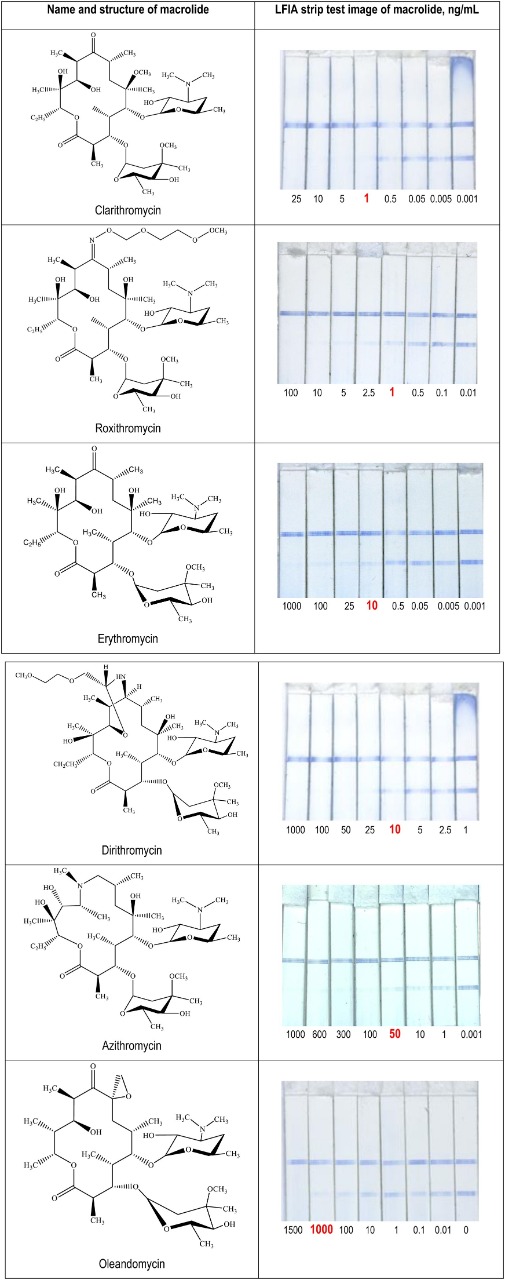Scientists have developed a rapid test that detects antibiotics in breast milk
Employees of the Department of Chemical Enzymology, Faculty of Chemistry, Moscow State University, as part of an international group of researchers from Germany and Russia, have developed an express method for the determination of antibiotics in breast milk. The work was published in the Journal of Pharmaceutical and Biomedical Analysis.
 Structural formulas of macrolides and their determination by strip test. The concentration highlighted in red corresponds to the antibiotic detection limit in ng / ml
Structural formulas of macrolides and their determination by strip test. The concentration highlighted in red corresponds to the antibiotic detection limit in ng / mlBreast milk is ideal for the protein, carbohydrate, fat and vitamin content required for the growth and development of the baby. Many factors influence the composition of milk, including the medications the mother takes. Numerous studies show that most drugs pass into breast milk, which can put the baby’s health at risk. Often these are macrolide antibiotics – commonly used anti-infective agents such as erythromycin or clarithromycin. Data on the effects of macrolides on child health are limited and conflicting. Although newborns generally tolerate exposure well, there is evidence of side effects and serious complications. Therefore, convenient and quick methods of controlling the appearance of macrolides in the milk of a nursing mother are needed.
To detect antibiotics, the researchers opted for an immunochromatographic assay. It is simple and based on the recognition of an antibiotic molecule by a specific receptor (antibody). Immunochromatographic test is a modern widespread method of express diagnostics of diseases and conditions of the body. One of the most common examples is pregnancy strip tests. Such tests are characterized by high sensitivity, low cost and ease of implementation: the easy-to-use system shows results within minutes and does not require complex equipment.
The new test strip uses antibodies that detect 6 macrolide antibiotics in breast milk. The result of the analysis appears after 10 minutes, it can be seen with the naked eye. The test monitors the appearance and elimination of one of the antibiotics in breast milk, which will ensure safe breastfeeding of babies.
In order to achieve the best test results in operation, many parameters have been investigated and optimized. For example, the material of the strip, the load of antibodies on a latex bead, the volume of this bead. It was found that under optimal conditions, six macrolide antibiotics can be visually detected at concentrations of 1-1000 ng / ml. And although the use of a special portable scanner can reduce the detection limit by an order of magnitude, in both cases the determined values are lower than the expected concentrations of antibiotics in breast milk after taking medication.
The work was carried out in collaboration with German scientists from the Berlin Institute for Materials Research and Testing (WAM) in the framework of exploratory research. However, the key immunoreagents for the test were created by a Russian team of scientists. Sergei Eremin, a leading researcher at the Department of Chemical Enzymology, Faculty of Chemistry, Moscow State University, ensured the collaboration of the working groups of Moscow and German universities.

